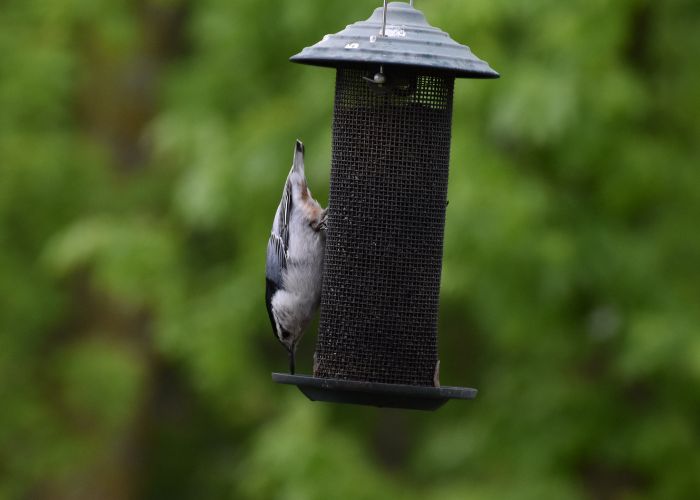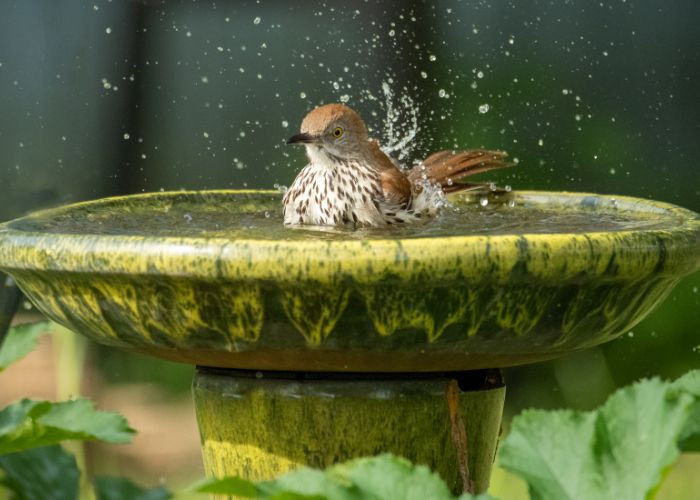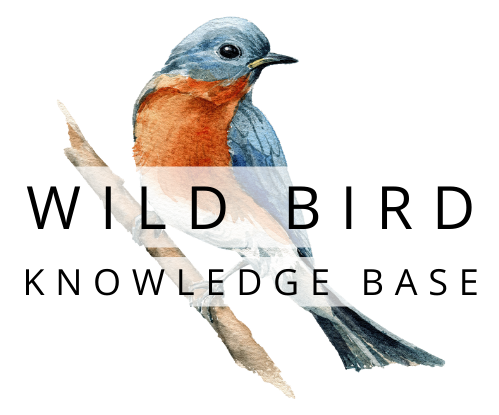Bird enthusiasts often wonder if they need to embark on a journey into the wilderness to appreciate the wonders of our feathered friends. The truth is you don’t have to go very far at all. Let’s talk about backyard birding. In this quick start guide, we’ll explore backyard birding, how it differs from traditional bird watching, and most importantly, how to get started.

What Is Backyard Birding?
Backyard Birding Vs. Bird Watching
Backyard Birding: Backyard birding is about inviting wild birds into your backyard. It’s a convenient, accessible, and rewarding way to observe and interact with your local bird species. With a simple bird feeder, you can enjoy close encounters with many kinds of birds. There is no need for a dedicated birding trip beyond your backyard to enjoy wild birds.
Bird Watching: Traditional bird watching can involve traveling to specific birding locations or natural reserves. While it offers the opportunity to see a wider variety of species, it’s more time-consuming and might require dedicated outings.
The Joy of Backyard Birding: Why It’s So Rewarding
Accessibility: Your backyard is outside your door. You don’t have to travel far, making it a perfect hobby for those with limited mobility or time constraints.
Daily Delight: Your backyard offers a daily opportunity to witness the fascinating behaviors of birds, whether it’s a cardinal enjoying a morning bath, a robin building a nest, or a red-bellied woodpecker grabbing seeds out of your bird feeder.
Convenience: It doesn’t have to be complex. You can attract birds and create a bird-friendly environment with a few bird feeders, bird baths, and birdhouses. You can easily enjoy a living, breathing nature show on your doorstep.
What All Wild Birds Need to Survive
Understanding the Basic Needs of Wild Birds
Shelter: Birds need safe spaces to rest and hide from predators. Trees, shrubs, and even birdhouses can serve as shelter.
Food: A reliable source of food is crucial. Different bird species have various dietary preferences, so offering a variety of foods is essential.
Water: Clean water for drinking and bathing is a must for birds. Bird baths and fountains provide this essential resource.
Safety: Birds need to feel safe from predators. Creating a bird-friendly environment involves minimizing threats from cats and other potential dangers.
The Role of Native Plants
Food Sources: Native plants are essential because they provide birds with natural food sources. For instance, native berries, seeds, and insects attract various bird species.
Nesting Sites: Native plants also offer nesting sites, as many birds prefer to build their nests in native trees and shrubs. A protective nesting site is crucial during the breeding season.
Low Maintenance: Native plants are often easier to maintain because they are used to the local climate and soil conditions.
Easy Ways to Attract Wild Birds to Your Backyard
Choosing the Right Bird Feeders
Types of Feeders: There are various kinds of bird feeders, including tube feeders, platform feeders, suet feeders, and more. Each attracts different bird species. Choose one or more that suit the birds you want to attract.
Placement and Maintenance: Position feeders where birds can easily access them but are out of reach of potential predators like cats. Regularly clean and refill feeders to keep birds coming back.
Types of Food: Start with black-oiled sunflower seeds. They are a favorite of various birds. You can buy mixed seeds that include millet, milo, corn, berries, and more. You can also get suet for your suet feeders.

Adding Bird Baths and Fountains
Importance of Clean Water: Clean water is essential for drinking and bathing. Bird baths or fountains provide a vital water source for birds.
Selecting and Maintaining Bird Baths: Choose bird baths made of concrete, ceramic, or plastic, and regularly clean and refill them to ensure they remain inviting to birds.

Creating Bird-Friendly Landscaping
Diverse Vegetation: Consider planting or using native trees, shrubs, and ground cover to provide food and shelter for different bird species.
Layered Landscaping: Create a diverse landscape with trees in the canopy, shrubs in the understory, and ground cover for a complete ecosystem.
Minimize Chemicals: Avoid pesticides and herbicides to protect the insects and other invertebrates that birds rely on for food.

Providing Bird Houses and Nesting Boxes
Selection and Placement: Choose birdhouses appropriate for the species you want to attract. Choose safe and sheltered locations to place them.
Proper Maintenance: Regularly clean and check for wear and tear to ensure the safety and comfort of nesting birds.

How To Use Your Cell Phone To Identify Wild Birds
Introduction to the Bird Identification App (Merlin Bird ID)
Merlin ID: Merlin Bird ID is a popular and user-friendly bird identification app. It’s available for both iOS and Android devices. It will help you identify birds with ease.
User-Friendly Interface: Merlin’s user interface is easy for birding beginners and pros. You only need to input some details about the bird you’re observing, and the app will help you identify what bird you see.
Extensive Database: Merlin Bird ID comes with an extensive database of bird species, making it a comprehensive tool for bird identification. You can choose bird databases for your specific region. Check for updates to the app for updated bird databases.
Integration with eBird: Merlin works with eBird, a popular citizen science project. Your sightings can contribute to scientific research on bird populations and migrations.
Using Merlin Bird ID Effectively
Taking Clear Bird Photos: To identify birds with Merlin Bird ID, capture clear photos of the birds in question. You want good lighting and get as close to the bird without disturbing it as possible.
Recording Bird Sounds: Merlin also allows you to identify birds by their calls and songs. Record the bird’s sounds and let the app work its magic. You want to keep your phone still when you record to reduce unneeded noise.
Seasonal and Geographic Filters: The app helps narrow down bird species by taking into account the time of year and your geographic location, increasing the accuracy of your identification. Verify your location when using the app so your results are accurate.
Sharing Your Bird Sightings (eBird)
Engaging with the Birding Community: Share your bird sightings on social media platforms dedicated to birding. Connect with other bird enthusiasts, share your discoveries, and learn from each other.
Citizen Science: Consider contributing to citizen science projects like eBird, where your sightings can help researchers track bird populations and migrations.
Conclusion
In conclusion, backyard birding is a great way to bring the beauty and wonder of wild birds into your daily life. By understanding the basic needs of birds, creating a bird-friendly environment, and using user-friendly bird identification apps like Merlin Bird ID, you can embark on an exciting journey of discovery right in your backyard. With a small amount of effort, you can attract various bird species and contribute to the conservation of these remarkable creatures. So, pick up those binoculars, set up your feeders, and start your backyard birding adventure today. It’s a hobby that promises endless delight and a deeper connection to the natural world. Enjoy the magic of your avian oasis, and remember that with every chirp, flutter, and song, you’re creating a haven for both the birds and yourself. Happy birding!
